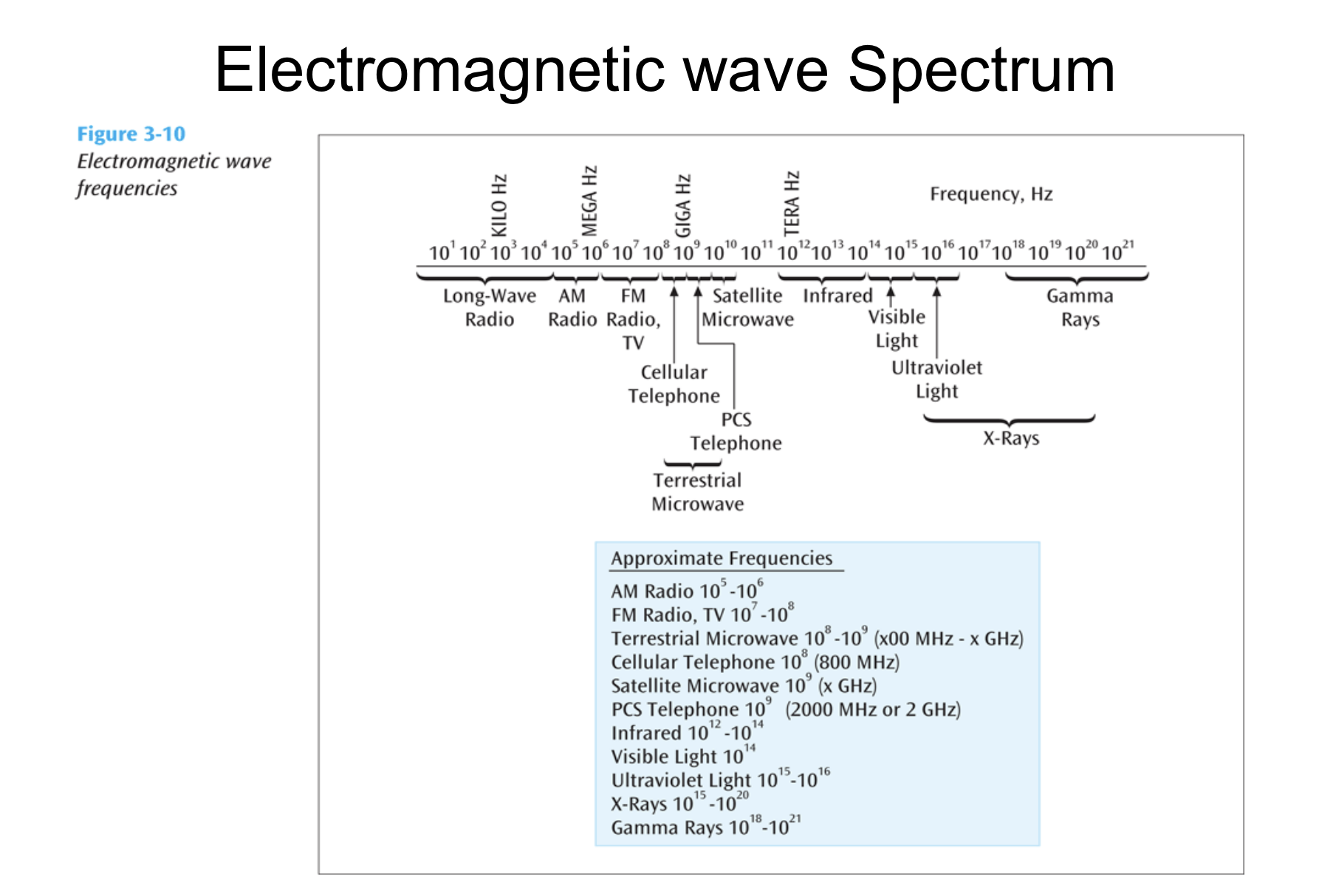Electromagnetic Wave Spectrum
The electromagnetic spectrum refers to the range of all types of electromagnetic radiation, which is used for transmitting data over wireless communication channels. Different frequencies and wavelengths within the spectrum have various applications in communication systems.
Characteristics in Communication:
- Bandwidth: Higher frequency ranges allow for higher data transmission rates.
- Range: Lower frequencies (radio waves) can travel longer distances, while higher frequencies (microwaves, infrared) offer short-range but higher speed.
- Interference: Signals are subject to various forms of interference, including weather, physical obstructions, and other electromagnetic sources.
- Security: Some parts of the spectrum are more prone to eavesdropping, while others (e.g., fiber optics in the visible light spectrum) offer enhanced security.
The selection of frequency for communication depends on the application, distance, bandwidth needs, and environmental factors.
Usage of the electromagnetic spectrum
- Bluetooth
- Free Space Optics (FSO)
- Infrared Transmissions
- Microwave Transmission
- Ultra-Wideband (UWB)
- Wi-Fi
- WiMax
- ZigBee
Spectrum Division

Radio Waves
- Frequency: 3 kHz - 300 GHz
- Usage: Primarily used in radio broadcasting, television signals, and wireless networks (Wi-Fi, cellular communication).
- Characteristics: Can travel long distances, penetrate buildings, but may experience interference.
Microwaves
- Frequency: 300 MHz - 300 GHz
- Usage: Used in satellite communications, Bluetooth, Wi-Fi (2.4 GHz, 5 GHz), and radar.
- Characteristics: Shorter wavelength allows higher data transmission rates, but is more sensitive to physical obstructions.
Infrared
- Frequency: 300 GHz - 430 THz
- Usage: Short-range communication, such as remote controls, and infrared sensors.
- Characteristics: Cannot pass through walls and is used in line-of-sight applications.
Visible Light
- Frequency: 430 THz - 750 THz
- Usage: Optical fiber communication uses light to transmit data at very high speeds over long distances.
- Characteristics: Offers high bandwidth and low interference, but requires a clear, unobstructed path.
Ultraviolet (UV) and Higher Frequencies:
- Usage: Rarely used for communication due to health hazards and high interference.